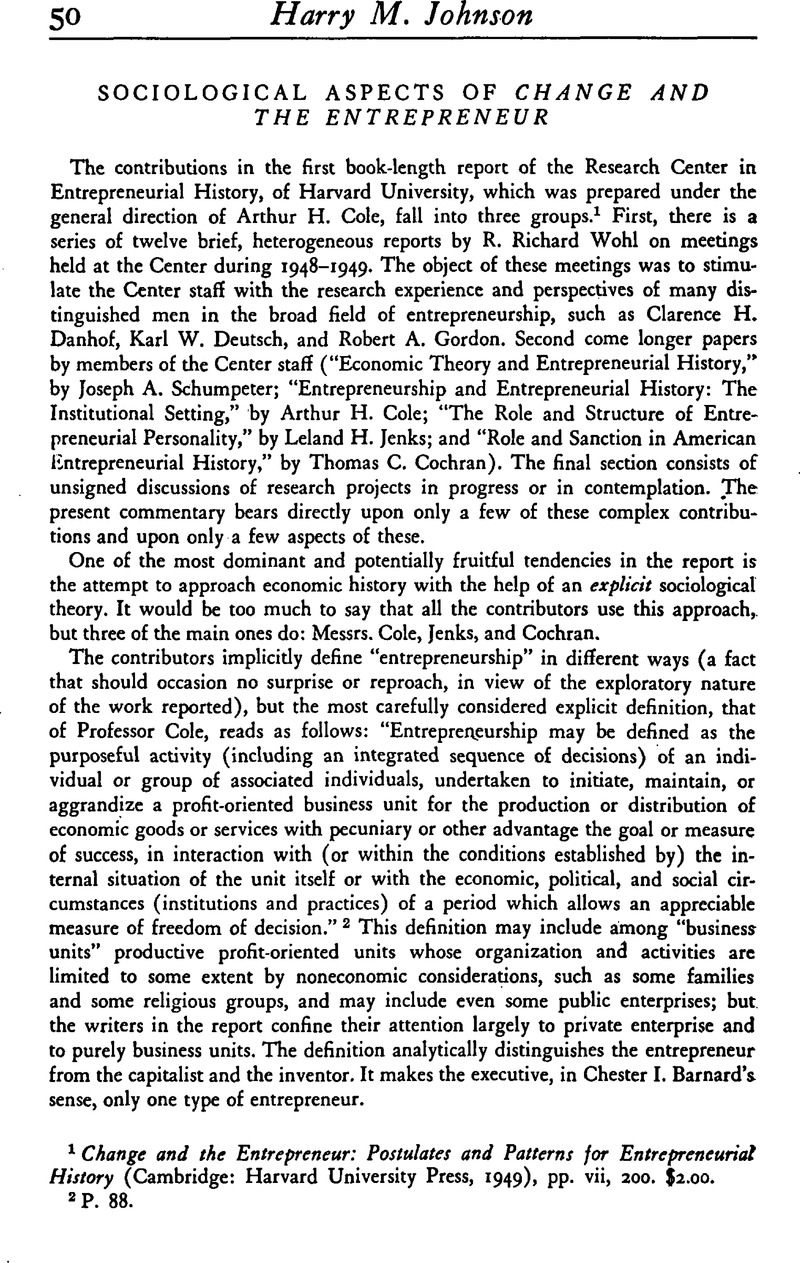No CrossRef data available.
Published online by Cambridge University Press: 03 February 2011

1 Change and the Entrepreneur: Postulates and Patterns for Entrepreneurial History (Cambridge: Harvard University Press, 1949), pp. vii, 200. $2.00Google Scholar.
2 P. 88.
3 Following the usage of Talcott Parsons, I have used variants of the term “institutionalized pattern,” instead of the term “sanction pattern,” which is used by writers in the Center's report. As Parsons has elsewhere pointed out, the institutionalized norms for the statuses correlative to a given status are indeed sanctions of the norms for that status, in the sense that fulfillment of one set of expectations is contingent upon fulfillment of the related sets (as in a contract). But it is also true that there are often prescribed expressions of disapproval, the content of which is, of course, not the same as the positive content of the related statuses. To avoid ambiguity in the treatment of all the complex possibilities, it is desirable to distinguish terminologically between a sanction and the norm of which it is a sanction.
We should make it explicit, perhaps, that institutionalization does not imply (nor exclude) legalization of the norm. As T. C. Cochran's rich material in particular shows, the normative content of a status (such as that of banker or backcountry storekeeper) includes many important informal elements.
4 P. 117.
5 P. 40, as reported by R. Richard Wohl.
6 For by far the best presentation of the concept of a generalized social system, see Parsons, Talcott, Essays in Sociological Theory Pure and Applied (Glencoe, Ill.: The Free Press, 1949)Google Scholar, esp. chap, iii and also (for elaborations and the relevant theoretical setting) the rest of the book.
7 See Parsons' paper “The Motivation of Economic Activities” (chap, ix in Essays); for more complicated aspects of motivation in relation to social structure, see chaps, i, ii, viii, x, xii, and xiv. Some of the excellent points made by Jenks will be better understood with a knowledge of the work of Parsons, who carries conceptual integration of sociology and psychology much further than Jenks.